US Equity Futures Decline as Markets Brace for Key Labor Data and Fed Rate Decision | Daily Market Analysis

Key events:
- USA - S&P Global US Manufacturing PMI (Aug)
- USA - ISM Manufacturing PMI (Aug)
- USA - ISM Manufacturing Prices (Aug)
- Eurozone - ECB's Supervisory Board Member Jochnick Speaks
US equity futures saw declines on Tuesday, with S&P 500 futures slipping by 0.17% to 5,638.70 and Nasdaq 100 futures falling 64 points, or 0.32%, to 19,511.10.
As of 00:01 EST, the Dow Jones Industrial Average also dropped by 0.20%, reaching 41,840.00, while the US Dollar Index edged up by 0.1% to 101.67. Meanwhile, the yield on the 10-year Treasury stood at 3.914%.
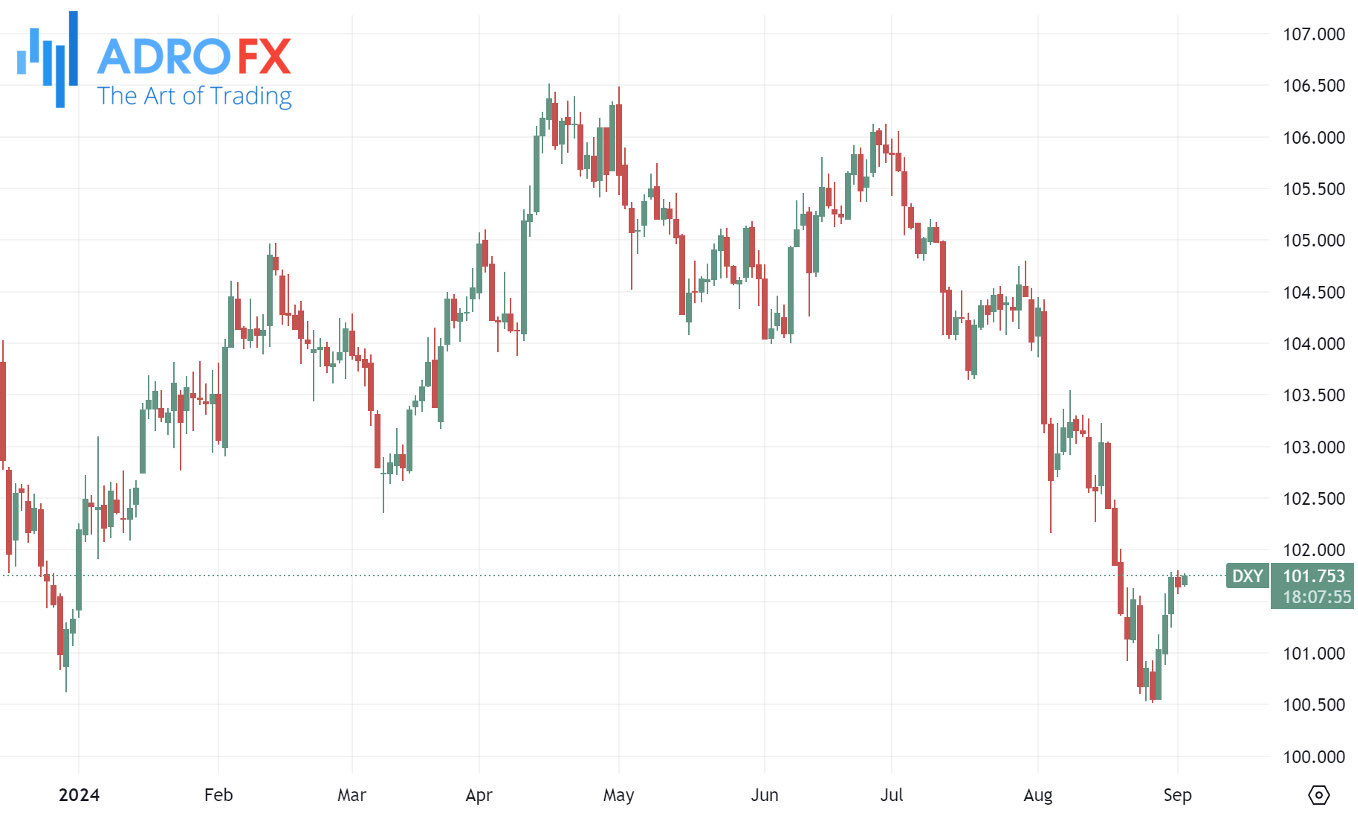
Gold prices fell on Tuesday, pressured by a stronger US Dollar and rising US Treasury yields. However, expectations that the Federal Reserve may cut interest rates in September could provide support for gold, as lower rates reduce the opportunity cost of holding non-yielding assets like gold. Additionally, ongoing geopolitical tensions in the Middle East could also boost demand for safe-haven assets such as gold.
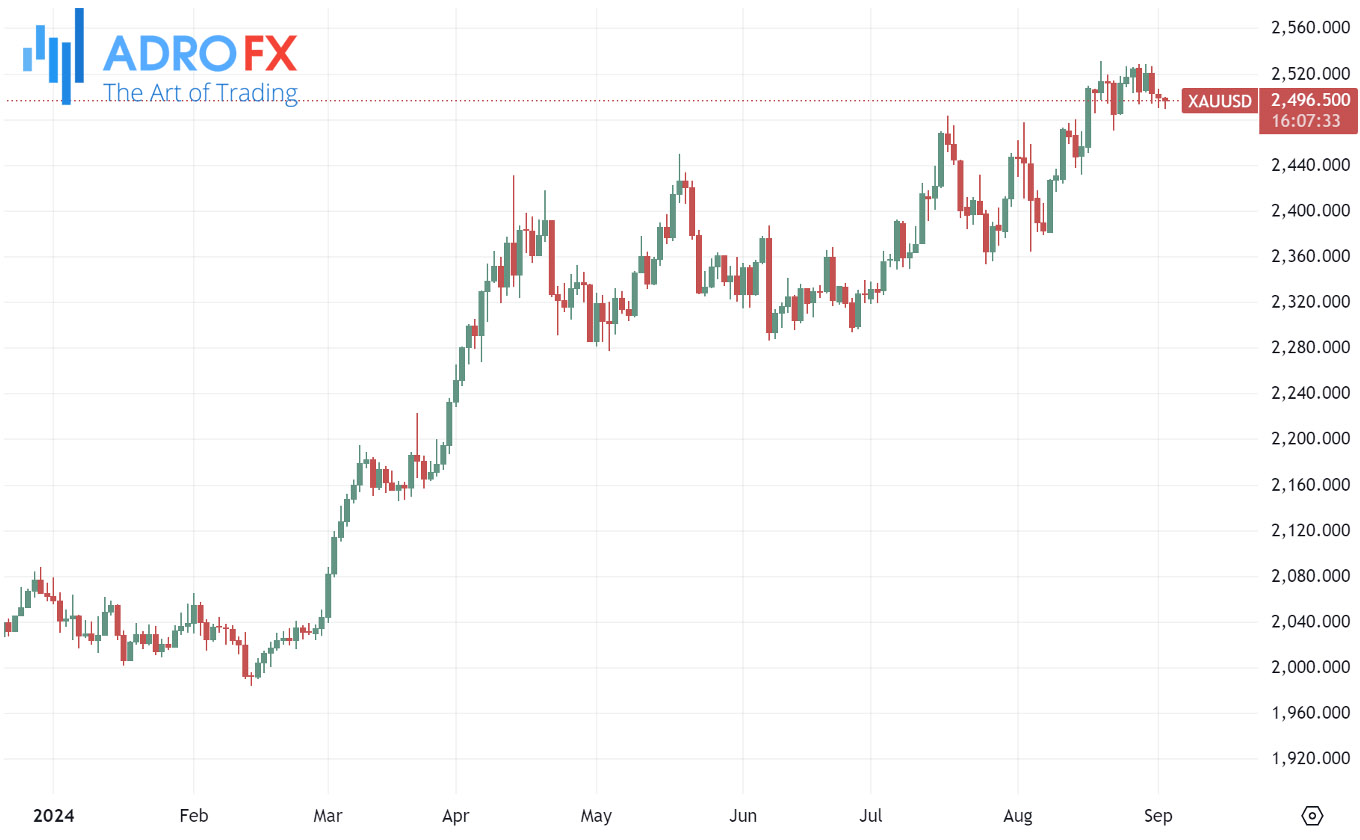
The Japanese Yen managed to break its four-day losing streak on Tuesday, making slight gains against the US Dollar. However, the JPY faced challenges as weak Japanese manufacturing data sparked speculation that the Bank of Japan might delay further rate hikes.
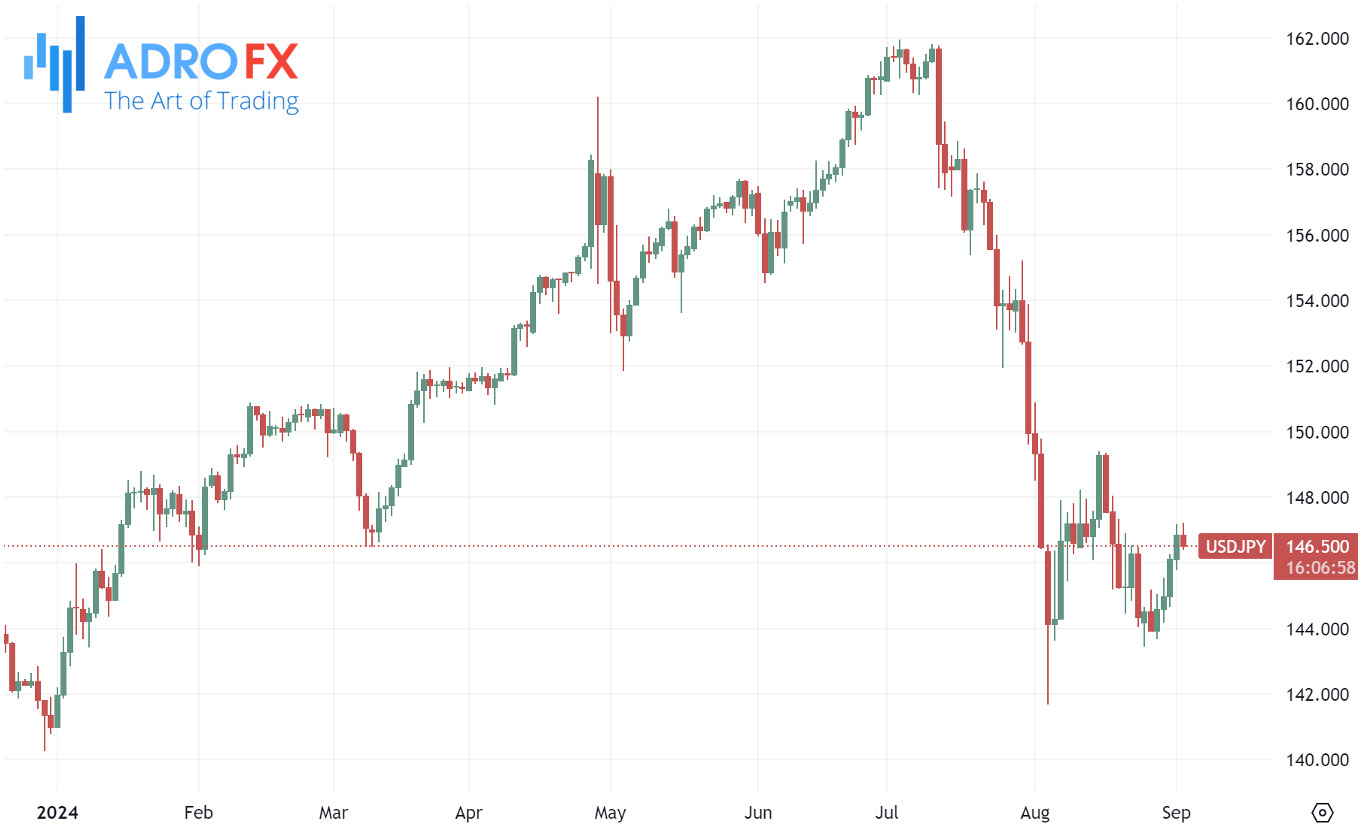
In response to rising energy costs and the resulting cost-of-living pressures, Japan plans to allocate ¥989 billion for energy subsidies. This government intervention could potentially drive inflation higher. The BoJ's hawkish stance on monetary policy has been further bolstered by a recent uptick in Tokyo's inflation. Additionally, Japanese companies reported a significant increase in capital spending for the second quarter.
The downside potential for the USD/JPY pair may be limited as the US Dollar gains strength amid improving Treasury yields.
Meanwhile, the Australian dollar edged lower against the US dollar as traders awaited the release of the ISM Manufacturing PMI data, which was due later on Tuesday. Despite this, the AUD/USD pair might find some support amid rising dovish expectations regarding the US Federal Reserve’s future policy decisions.
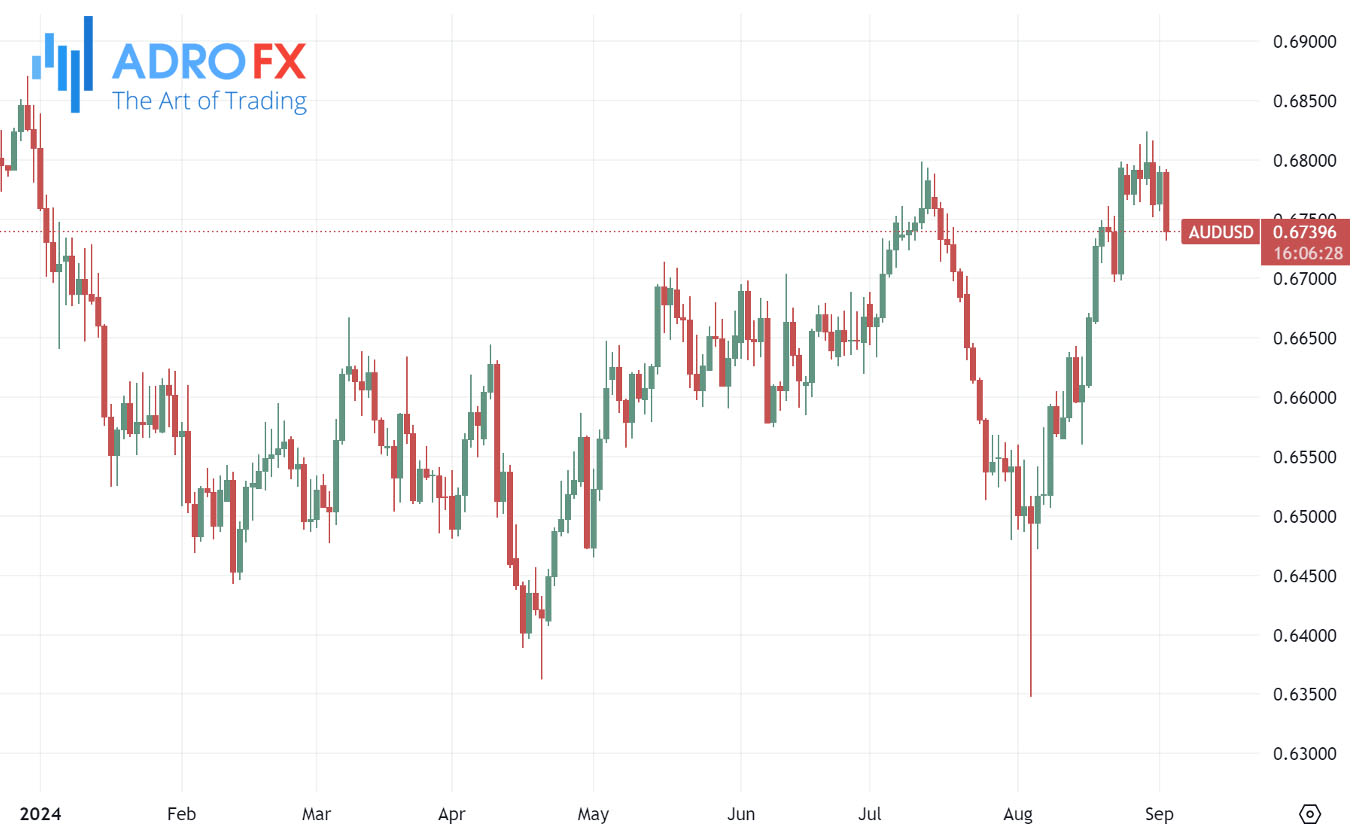
Traders are now turning their attention to Australia's Q2 Gross Domestic Product (GDP) and July Trade Balance data, along with an upcoming speech by Reserve Bank of Australia Governor Michele Bullock later in the week, to gain more insight into the central bank's hawkish monetary policy stance.
The New Zealand Dollar continued to lose ground for the third consecutive session, trading around 0.6200 during the Asian session on Tuesday. In New Zealand, the Terms of Trade Index rose by 2.1% quarter-on-quarter in Q2, bouncing back from a 5.1% decline in the previous quarter and surpassing market expectations of a 2.0% increase. Export prices saw a significant 5.2% rise in the second quarter, recovering from a 0.3% decrease in the March quarter. Import prices also rebounded, increasing by 3.1% after a sharp 5.1% drop in the prior period.
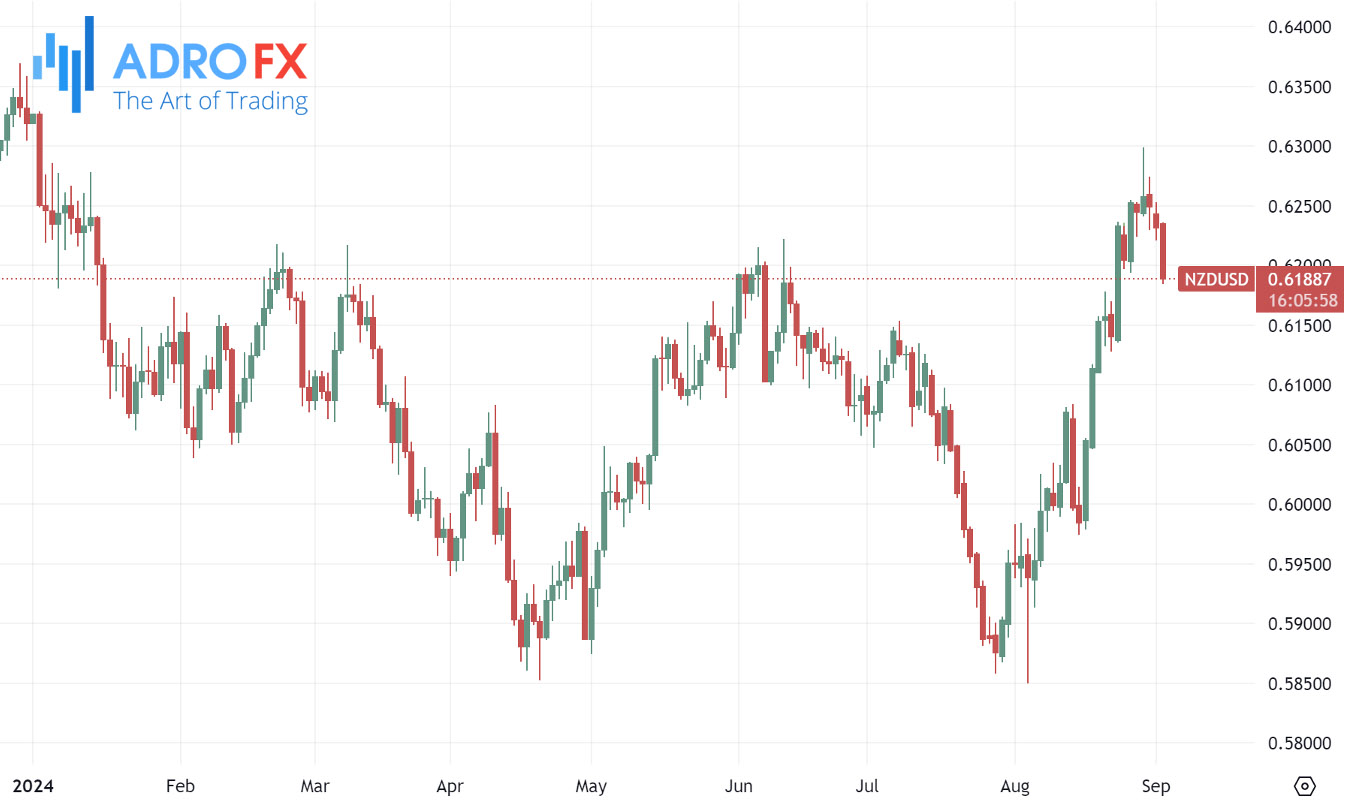
New Zealand's NZX 50 Index remained steady, hovering around 12,500, as global market drivers were limited with Wall Street closed for the Labor Day holiday. Traders are evaluating July manufacturing PMI data from China, a key trading partner. Official data indicated the sharpest contraction in factory activity in six months, while private survey readings suggested that the manufacturing sector had expanded for the seventh time this year.
Investor focus is shifting to a pivotal week for US markets, with key labor market data on the horizon. Last month’s employment report fell short of expectations, triggering a sell-off in risk assets that began with the previous day’s disappointing ISM Manufacturing PMI.
The weaker labor figures have sparked debate about their causes, with Hurricane Beryl playing a notable role. Although the Bureau of Labor Statistics (BLS) claimed the hurricane, which struck Texas during the survey week of the July employment report, had "no discernible effect" on the employment data, the household survey suggested otherwise.
It showed that 436,000 people were unable to work due to adverse weather conditions - a record high for July. Additionally, 249,000 people were reported as being on temporary layoff during this period.
These temporary layoffs are believed to be a major factor behind the rise in unemployment. Market participants are eager to see if July’s data was indeed skewed by these temporary factors.
The Federal Reserve, which closely watches the labor market, will use this upcoming report to guide its decision on the size of the next interest rate cut, with options being a 25 or 50 basis points reduction.
In the UK, the GBP/USD pair remained in the mid-range on Monday, hindered by a sparse economic calendar on the UK side and closed US markets for the Labor Day holiday. Despite a slow start to the trading week, the British pound appears poised for a near-term pullback, assuming markets remain stable ahead of the release of US jobs figures later in the week.

The UK economic calendar is relatively light throughout the week, with only low-tier data releases available for GBP traders. In contrast, the US economic calendar is more active, with Purchasing Managers Index (PMI) figures spread throughout the week, though the focus will be on US labor data, particularly the ADP Employment Change on Thursday and the nonfarm payrolls (NFP) report on Friday. This week's labor data represents the last major update for the US economy before the Federal Reserve's highly anticipated rate decision on September 18.








